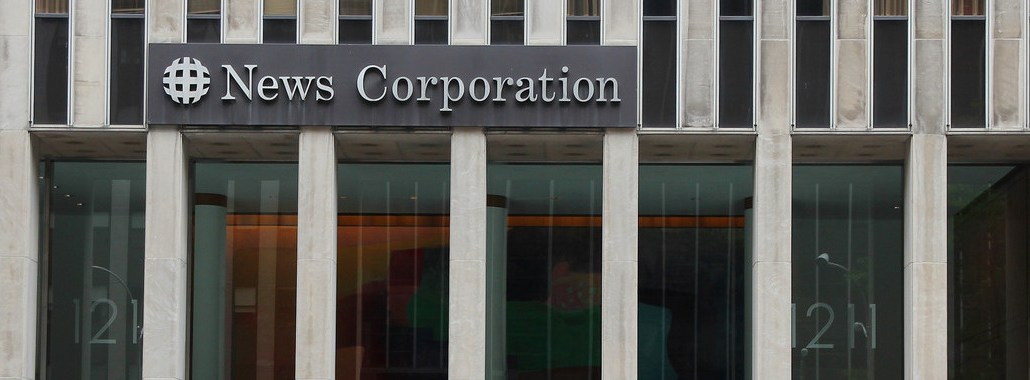News Corp takes publishing lessons from its own right-leaning Heat Street


Four months after News Corp launched its right-leaning Heat Street, the startup claims nearly 6 million unique visitors and is quietly becoming a model for the rest of the company for its lean and nimble approach, if not its ideological slant.
Heat Street is part of News Corp’s recently formed Dow Jones Media Group, which oversees startup and digital media projects and includes non-Wall Street Journal titles including Barron’s and MarketWatch. It started when former British M.P. Louise Mensch pitched the idea to News Corp CEO Robert Thomson back in 2013 as a “Libertarian Huffington Post.”
She along with Noah Kotch, a former TV producer for NBC and ABC, run the site, which is known for its culture-war stories like “Students, Lawmakers Push to Ban Restrictive Campus ‘Free Speech Zones'” and “Black Lives Matter Forced Inner-City Teacher Into Retirement Over Charges of ‘White Supremacy’.”
“I did perceive this space had a big gap, where everything on the right was very, very right, and I saw place for a punchy libertarian site about the culture wars,” Mensch said. “The younger media — BuzzFeed, Vox — was all very liberal, and everyone on the right was much older.”
Heat Street isn’t alone in trying to appeal to young conservatives. In 2013, Atlanta-based Cox Media Group started a site called Rare for right-of-center millennials. In March, Hearst and Verizon teamed up to launch Rated Red, a millennial-skewing “Vice for the red states.”
The tone of the puckish Heat Street stands in contrast to the staid, more centrist Journal. Heat Street content has been shared by News Corp sites, but, notably, the Journal newsroom by and large hasn’t, although it does share and link to MarketWatch and other News Corp content.
But Heat Street’s rapid growth has won it some attention from inside the company, with its small team and fast-twitch approach to publishing. The site was built for a mobile audience, and half its visits are coming from social media. (ComScore, whose numbers are often smaller than publisher’s own figures, pegged Heat Street’s traffic at 2.3 million uniques in July, in the ballpark of other conservative sites Drudge Report and PJ Media, although Heat Street said that figure was panel-based, so the full audience wasn’t reflected.)
Heat Street has about 20 full-time staffers and spent little on promotion, other than paying to boost posts on Facebook and handing out Heat Street-labeled bottles of hot sauce at the Republican and Democratic conventions. It’s a far cry from the way News Corp went about its tablet-focused newspaper The Daily back in 2011, on which it spent $30 million to launch before it folded less than two years later.
At Heat Street, engineers sit alongside editorial, and the staff is constantly measuring and tweaking details on everything from how links appear to how share buttons look. The site is running on programmatic ads, but is starting a direct sales effort.
“It’s hard to ignore the success Heat Street has had in building its audience so quickly,” said Almar Latour, who runs the Dow Jones Media Group. “They’re always making changes at a very fast pace. That feedback loop is not as typical for larger operations, but I think it’s incredibly important to get that right.”
News Corp is already starting to take some of the lessons of Heat Street and figuring out how to apply them to its other publications. Latour led a company-wide push to improve the publications’ mobile presence, and the heads of Heat Street presented concrete ideas that could be adopted at titles like Marketwatch and the Journal.
“That’s a first for a startup to have that kind of impact on other products,” Latour said. News Corp plans to create more digital-only brands, and Latour said he expects Heat Street to be a model for them. “All leaders will start at Heat Street.”
More in Media

From sidelines to spotlight: Esports events are putting creators center stage
Esports events’ embrace of content creators reflects advertisers’ changing priorities across both gaming and the wider culture. In the past, marketers viewed esports as one of the best ways to reach gamers. In 2025, brands are instead prioritizing creators in their outreach to audiences across demographics and interest areas, including gaming.

Condé Nast and Hearst strike Amazon AI licensing deals for Rufus
Condé Nast and Hearst have joined the New York Times in signing a licensing deal with Amazon for its AI-powered shopping assistant Rufus.

Media Briefing: AI payouts may be entering a new era
AI compensation is evolving — and new models, not just publisher demands, are driving the shift beyond flat-fee licensing.





